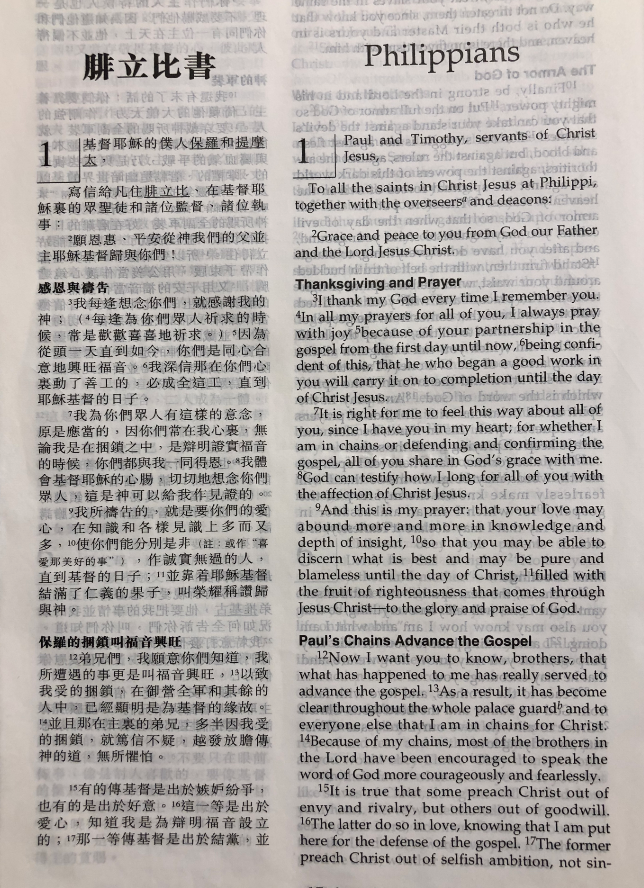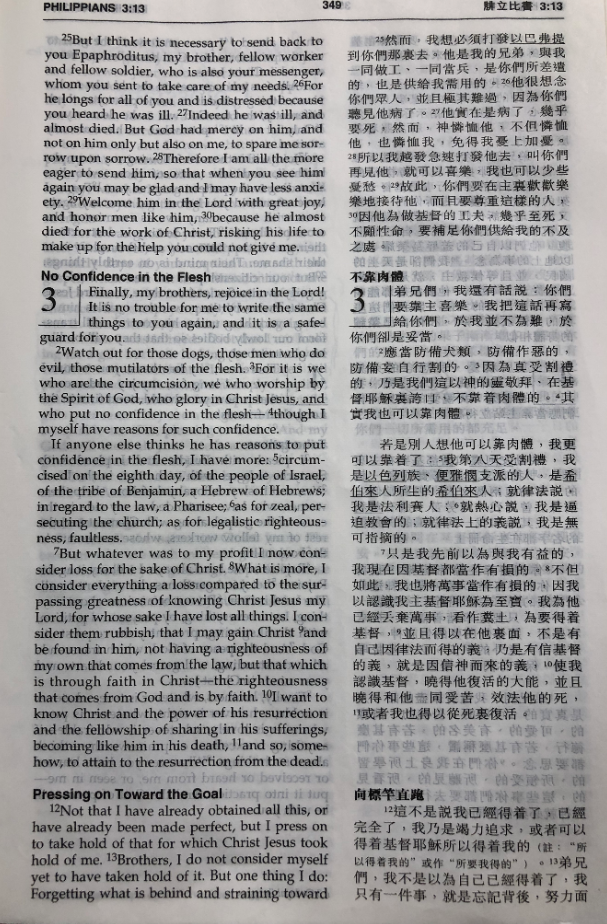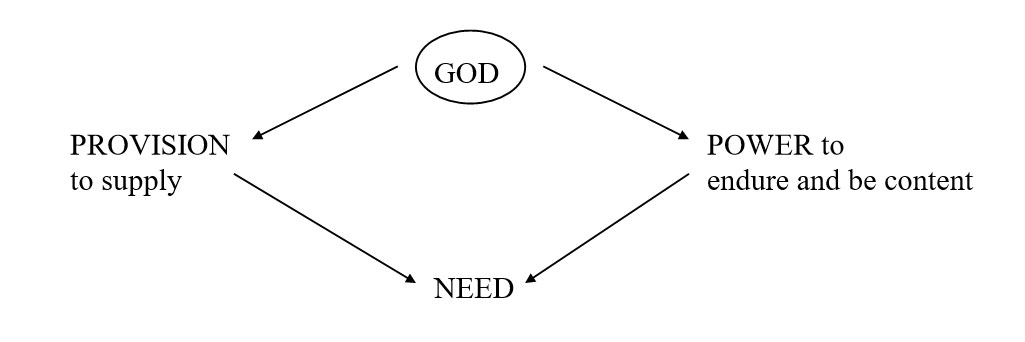Follow Up
The Elementary Steps in Bible Study
Lesson 1 Key Thought
Lesson 2 Flow of Logical Relationships
Lesson 3 Summary and Key Verse
Lesson 4 Seek to Know the Meaning of Words
Lesson 5 Meditation
Lesson 6 Observations
Lesson 7 Application
Lesson 8 Putting it All Together
Lesson 9 Outline, Title and Key Centre
Lesson 10 Charting
Lesson 1 Key Thought
1. Bible Study defined
Study Bible is to discover the intent of the author accurately and apply the truths accordingly.
c.f. 2Tim 2:15
James 1:25
“To discover is to obtain insight or knowledge the first to ascertain, unearth, explore. A discoverer is one who finds out things for himself.”
“It is only when truth is discovered that it is appropriated. When a man is simply told the truth, it remains external to him and he can easily forget it. When he is led to discover the truth himself, it becomes an integral part of him.”
2. Learning a skill
“It is very possible to learn the skills in study and come out only with intellectual knowledge, but this need not be, nor is it likely to happen. The pianist or the star baseball player is the one who has mastered and the skills of playing so that mechanics have become second nature and he is free to play his best. In the same way, when you learn some of these rather mechanical skills of study, you will gain deeper insights into the truths in the Bible and the Holy Spirit will have a free course in your life.”
3. Key thought
Key Thought is the main teaching, subject or thought the author intend to communicate in the content of the verse. e.g. Phil 4:1 the key thought is ‘stand firm’;
I Pet 4:8 the key thought is ‘love one another’
“Therefore my brothers, you whom I love for, my joy and crown, that is how you should stand firm in the Lord, dear friends!” (Phil 4:1)
“Above all, love each other deeply, because love covers over a multitude of sins” (1Peter 4:8.)
4. Assignment
Determine the key thought in Phil 1:1-11
Lesson 2 Flow of Logical Relationships
1. Review the assignment given for Phil 1:1-11
2. There may be difficulties in finding the key thoughts of certain verses. An example would be I Pet 1:3, which contains several truths.
What do you think is the key thought?
Sometimes a key thought occur in a grouping of two verses, e.g. James 3:7,8
What is the key thought here?
3. Flow of logical relationships
We need to note the flow of ideas in a passage, the relationship of verses to each other. Sometimes the author makes a general statement, then explains it with examples (e.g. 2Tim 3:1-5). Other times he may list a series of ideas and then summarise with a general statement (e.g. James 2:14-17) or it may give a command, warning or advice and then back them ultimate reasons, purposes or proofs. Or he may enlarge and elaborate on the key idea that has been presented.
Exercise: Trace the flow of ideas in Phil 1:1-11
4. Assignment
Determine the key thoughts for Phil 1:12-30 and observe the presentation of ideas and their relationships
Lesson 3 Summary and Key Verse
1. Review the assignment given
2. Summary and key verse
It has been observed that a passage contain verses that are related to one another. Often times, these verses seem to focus on the same topic. After having determined the key thoughts and traced the relationships of verses, we can summarise all the key thoughts with a word or phrase.
It can also be found that there is a verse in the passage being studied that is the key centre of the whole passage. This verse normally reflects or summarise all the key thoughts in the passage.
Exercise: Summarise the whole chapter of Phil 1
3. Assignment
Study Phil 2:1-18
a) summarising the passages
b) looking for the meanings of these words and phrases:
v.1 fellowship with the spirit
v.2 spirit and purpose
v.12 work out your own salvation
v.16 holding forth the word of life
Lesson 4 Seek to Know the Meaning of Words
1. Review the assignment given
2. Seek to know the meaning of words
Understand the meaning of words precede the understanding of the passage.
a) The first step in determining the meaning of words is to ask questions. When question are used, words, phrases and statements that seem understandable prove to be vague and need clarification.
Questions we can use are:
- Why did the author say,...?
- What is the meaning of ...?
- What was on his mind when he said ...?
- What is the implication of ...?
- What is the relationship between...?
b) Problem words fall into two categories:
- Words that we know but their usage eludes our appreciation e.g. ‘prize’ in Phil 3:14
- Words that we do not understand e.g. ‘circumcised’ in Phil 3:3
c) To find out the meaning, we can:
i) Read the context to consider its usage;
ii) Compare with other translations to discover what other words are used in translating;
iii) Define words with help of commentaries and dictionaries;
iv) Study cross references for additional insights e.g. Phil 1:14 with I Cor 2:3 on preaching the word fearlessly;
v) Think. We can define words, compare translations, study cross references and still not get to the core of the meaning of a passage. We also have to wrestle, think and meditate on the words.
3. Assignment
Study Phil 2:19-30 and apply the steps that you have learnt
Lesson 5 Meditation
1. Review the assignment given
2. Meditation
When God speaks to us, we should stand still and consider what He is saying. In Bible Study, reflection is the mind and heart at work, utilising all the thinking faculties to concentrate on what the eyes have seen. To meditate profitably, we need to :
a) Be prayerful - we have to rely on the illumination of the Holy Spirit to open up the richness of His truths to us.
b) Be imaginative - Try to put yourself into the situation of the Bible passage. Taste and feel every word you read.
c) Be realistic - The writings of the Bible are recorded in a historical setting. As such, do refrain from viewing the passage through twentieth century glasses.
d) Be empathic - Identify with the author, recipients or other people concerned. Get under the ’skin’ of the characters, sensing their emotions, yearnings, difficulties etc.
e) Be patient - As the Bible is the revelation of the Infinite God, problems would present themselves. We need to take note of Samuel’s plain words to Saul: “Stand thou still a while, that I may show thee the word of God.” (I Sam 9:27)
To do this a helpful method is to do a word by word meditation
3. Assignment: Study Phil 3:1-11.
Lesson 6 Observation
1. Review the assignment given
2. Observation
Observation is the act, power or habit of seeing and noting; to be mentally aware of one sees.
The purpose of observation is to saturate oneself with the content of a passage. We need to learn to be exact and accurate in our observation. Not everything we read will be of equal value; therefore, in the process, we also have to learn to discern what is noteworthy and what is not. All these procedures requires concentration.
One reason we do not ‘see’ very much when we read is that we do not know what to look for. Most of us need ‘handles’ -- helps in knowing what specific things to look for.
a) Key words -- look for those words which are important. Repetitions of words will sometimes give us a clue.
b) Contrasts, comparisons, illustrations -- these are used to bring out the author’s ideas.
c) Repetition & progression of ideas -- take special note of lists of items or ideas. Compare the items and see if there is any significance in the order; if ideas progress toward a climax e.g. ‘ashamed of gospel’ in II Tim 1.
d) Connectives -- connectives are very important in revealing key ideas and relationships. Be on the alert for some of the connectives:
“if” to introduce a conditional clause
“therefore” to introduce a summary of ideas, result or condition.
e) Conjunctions -- “because” or “for” to introduce a reason or result; “but” to introduces a contrast; “in order that” often sets forth a purpose.
3. Assignment: Study the remaining verses in Phil 3
Try to think of ways which you can apply in obedience to the truths observed
Lesson 7 Application
1. Discuss your findings and meditations on the previous study
2. Application
If we truly enjoy reading and studying the Bible, we will enjoy putting it into practice. The Psalmist was very excited about the Scriptures that he exclaimed:
“O how love I thy law! It is my meditation all the day.” Ps 119:101
Seven lines later he supports this testimony with a word about deeds:
“I have refrained my feet from every evil way, that I might keep thy word.”
Ps 119:101
Application doesn’t happen by transformation nor by chance, application is by intent.
a) Pray for God’s voice - we respond to God, not to a rule book, therefore we need to seek God’s prompting.
b) Be ready to obey - the Bible is given to us not merely to increase our knowledge, but also to change our lives as we respond to God’s teachings.
c) Accept the Bible’s - we must look at the Bible intently and then at our own lives to see how we can conform to the image of Christ.
d) Isolate specific applications - it may be a sin to avoid, command to obey, a promise to claim or an example to follow.
A concept I have not appreciated or a mind-set that I must change
An attitude or a feeling that is inappropriate or inadequate
An action that is improper or insufficient
To God, others, society and to myself
Try to make it checkable.
3. Assignment
Study Phil 4:1-9 and applying all the steps learnt
Lesson 8 Putting It All Together
1. Share your discovery on the previous assignment
2. Putting it all together
We have been considering the step-by-step study of the passages of a chapter. Now we shall tie them together into a meaningful whole.
When doing a book study, we approach the text by studying a chapter at each sitting.
i) First we FAMILIARISE ourselves with the contents of the chapter by reading it several times.
ii) Next we FOCUS on the verses -
a) defining the meaning of problem words
b) looking for applications to life
c) identifying the key thoughts and then
- tracing the continuity (flow) of ideas and
- connecting the key thoughts into summaries
3. Assignment
Complete the study of Phil 4
Lesson 9 Outline, Title and Key Centre
1. Review the assignment given
2. Outline, title and key centre
a) Unless we are gifted with a photographic memory, it is impossible for us to retain for very long all the thoughts we obtain in the study of a Bible passage. So we crystallise our study by recording what the author intend to say in an outline form.
i. first we collect the summaries of the photographs;
ii. then we review and evaluate the summaries, changing them if necessary;
iii. finally, put them together into an outline.
b) Not only can we record the chapter in an outline, we can further express the contents in a concise manner by giving a title to the whole chapter.
Just as there is a verse that rounds up or is the key centre of a paragraph, there is a key centre or key verse for the chapter. Very often, the key centre and the title are similar in thought.
Exercise: Summarise Phil 4 and give it the key centre and a title
3. Assignment
Collect your summaries for the whole book of Philippians and put them together into an outline form
Lesson 10 Charting
1. Share your outline of the whole book of Philippians
2. Charting
The chart is one of the most effective ways to enable us to grasp the whole picture of chapter or book. It has real value as a study device and equal value as a teaching tool. The purpose of the chart is to block out the contents of a paragraph, chapter or book in such a way that both content and relationships can be more easily seen and understood.
Outline Chart: The outline or summary chart is concise and simple, keeping only the key ideas, setting out a bird’s eye view of the principal teachings in the chapter or book.
Flow Chart: The purpose of the flow or study chart is to record in graphic form the observations made as we study some portion of Scripture. It may be the associations of similar ideas that occur in a passage.
Illustrative Chart: An illustrative chart helps us to visualise certain truths taught in a passage. An example of this would be on the sufficiency of God in meeting needs from Phil 4.
Sources:
1. Enjoy Your Bible Irving Jensen
2. Search the Scripture Navigators
3. The Joy of Discovery Oletta Wald












